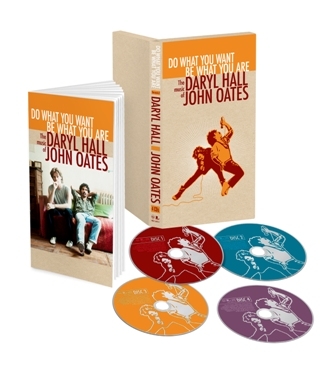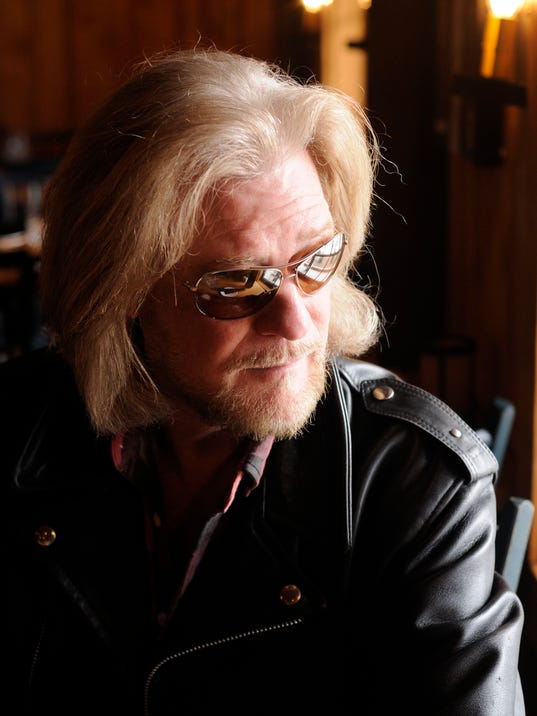DuranDuran
Proud Member
- Joined
- Aug 27, 2011
- Messages
- 12,585
- Points
- 113

Daryl Hall and John Oates were a hit-making phenomenon in the 1970s and '80s, who landed 29 singles in the Top 40 and sold more than 40 million albums, making them the most successful recording duo in history.
Both were raised in Philadelphia suburbs. Oates had moved there when he was four from New York City, and he began playing guitar at age eight. As a child, Hall studied voice and piano. While in their teens, the two frequented Philadelphia ghettos, where they joined doo-wop groups. In 1967 Hall recorded a single with Kenny Gamble and the Romeos (which included future producers Gamble, Leon Huff and Thom Bell). He met Oates later that year when his group, the Temptones, and Oates’ group, the Masters, competed in a battle of the bands at Philadelphia’s Adelphi Ballroom; they shared a freight elevator while escaping a gang fight. At Temple University, Oates earned a degree in journalism and Hall studied music, but dropped out in his senior term.
Hall formed Gulliver, a group that recorded one LP on Elektra in 1969, and Oates joined just before it disbanded. Oates then traveled to Europe and Hall became a studio musician, singing backup for the Delfonics, the Stylistics, and the Intruders. Upon Oates’ return, the two decided to team up. In 1972 they signed with Atlantic Records and released their Arif Mardin-produced debut, "Whole Oates", a folksy album that attracted little attention. Their next LP, the R&B-oriented "Abandoned Luncheonette" (also produced by Mardin), yielded "She’s Gone," that was a flop for Hall and Oates but a #1 R&B hit for Tavares six months later. In 1974 the two recorded "War Babies", a concept LP, with producer Todd Rundgren. A drastic departure from their earlier efforts, the LP sold 100,000 copies in the New York area, but, citing a lack of hit singles and stylistic inconsistency, Atlantic dropped them. Surprisingly, "She’s Gone" was re-released in 1976 and made it to #7 on Billboard's Hot 100.
Their RCA debut album, "Daryl Hall and John Oates", contained a soft ballad called "Sara Smile" that became a #4 hit. The tune was co-written by Hall for his frequent collaborator/girlfriend Sara Allen (whose sister Janna Allen helped write "Kiss on My List," "Private Eyes," and other Hall and Oates songs; she died of leukemia in 1993). With the release of 1976’s "Bigger Than Both of Us", the two previous albums went gold. "Bigger" eventually became their first platinum LP and contained their first #1 single, "Rich Girl."
Hall, the more prolific writer of the two, began working with Robert Fripp on a solo LP, "Sacred Songs", which RCA refused to release until 1980. He also sang on Fripp’s "Exposure". Yet apart from the Top Twenty "It’s a Laugh" from "Along the Red Ledge" and "Wait for Me" from "X-Static", the duo hit a late-Seventies commercial slump.
Hall and Oates retrenched and decided to produce their next LP themselves. The result, 1980’s platinum "Voices", returned the duo to the singles chart with a vengeance, with "How Does It Feel to Be Back" (#30), "Kiss on My List" (#1), a cover of the Righteous Brothers "You’ve Lost That Loving Feeling" (#12), and "You Make My Dreams" (#5). The following year’s "Private Eyes" was similarly successful; the title cut and "I Can’t Go for That (No Can Do)" were both #1, while "Did It in a Minute" went Top Ten.
The album "H20" yielded still more hits with "Maneater" (#1), "Family Man" (#6), and "One On One" (#7). Even the two new songs included on a best-of LP, the double-platinum "Rock ‘n’ Soul, Part 1", cracked the Top Ten: "Say It Isn’t So" (#2, 1983) and "Adult Education" (#8, 1984).
"Big Bam Boom" incorporated a marked hip-hop influence and produced Hall and Oates’ sixth and last #1 hit, "Out of Touch," as well as "Method of Modern Love" (#5, 1985), "Some Things Are Better Left Unsaid" (#18, 1985), and "Possession Obsession" (#30, 1985).
After a live LP recorded at Harlem’s Apollo Theatre with former Temptations Eddie Kendricks and David Ruffin, Hall and Oates took a three-year sabbatical, during which time Hall released a second solo album, "Three Hearts In The Happy Ending Machine". Its "Dreamtime" went Top Five in 1986.
Hall and Oates resumed recording together in 1988, but this third career phase was noticeably less successful. Their two albums, "Ooh Yeah!" and "Change of Season", contained only one hit apiece: "Everything Your Heart Desires" (#3, 1988) and "So Close" (#11, 1990).
It would be seven years before the pair would release another album. 1997's "Marigold Sky" was issued by an independent label called Push Records, that was partly owned by Daryl and John. As the duo continued to tour, another greatest hits compilation called "Behind The Music" was released in 2002, followed by a new studio album, "Do It For Love" in 2003.
2004 saw their next album, "Our Kind of Soul" peak at #69 on The Billboard 200, and John and Daryl continued to tour in support of the CD in 2005 and 2006.
November of 2006 brought another new album, "Home for Christmas" released on their own label, U-Watch / DKE Records. The 11-track disc includes classic and obscure holiday tracks as well as two originals that are a throwback to their older classics, like "Maneater", "Out of Touch" and "Private Eyes". "When you make a Christmas album, you have a delicate balance of doing something that's somewhat familiar so that it feels like a Christmas record," said John Oates, who wrote "No Child Should Ever Cry on Christmas" for the CD. "And at the same time you want to do something that's original so that you're not just basically karaoke-ing the past 30, 40, 50 years." Hall and Oates recorded the disc over several months in the Bahamas, upstate New York, London and Colorado, where Oates has a "mini ranchette."




